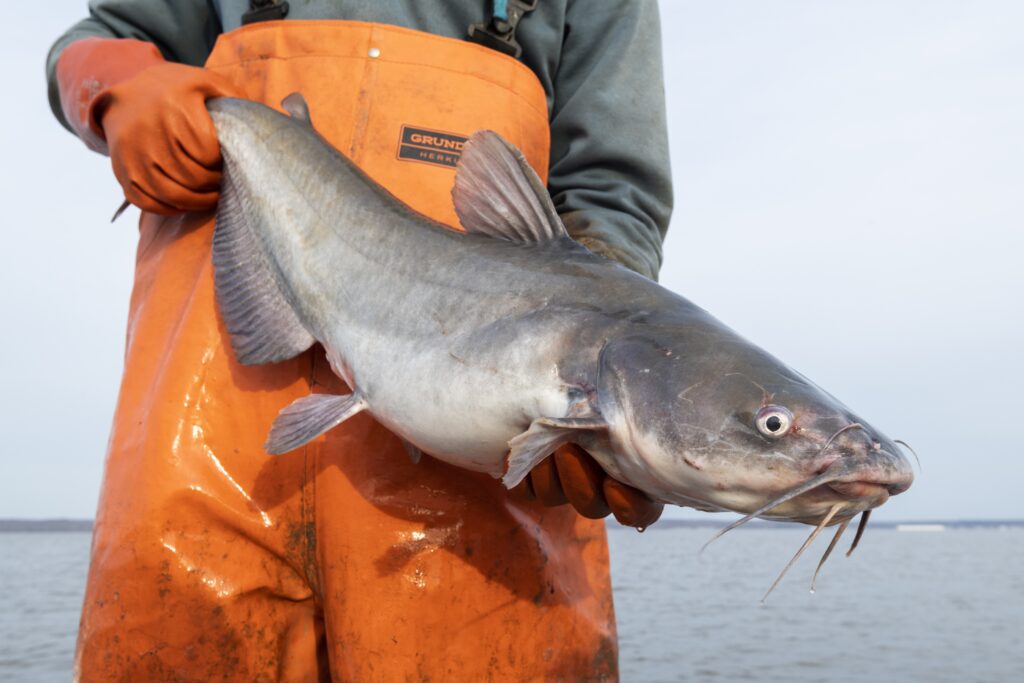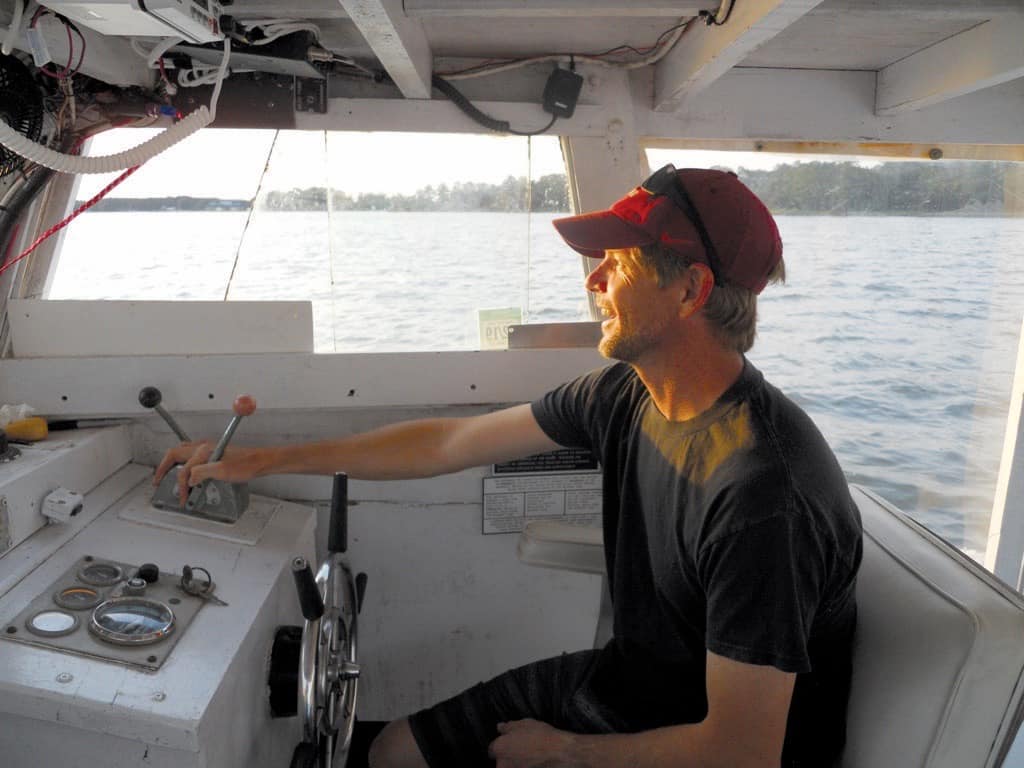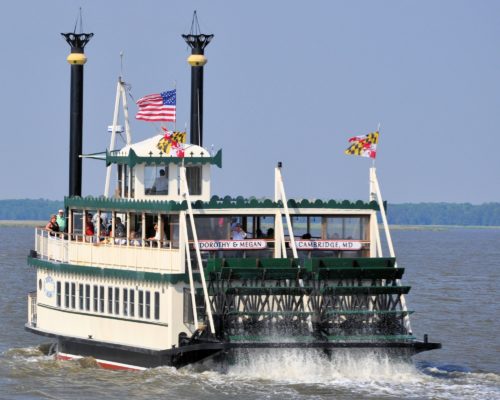“They are a good fish in the wrong place,” says fourth-generation waterman Billy Rice. Rice grew up working on the Potomac River at a time when blue catfish were nonexistent; now they take up an estimated 70 percent of the biomass in some of the Chesapeake Bay’s tributaries.
Blue catfish are native to the Mississippi, Missouri, and Ohio River basins. The popularity of the blue catfish as a sport fish prompted the state of Virginia to introduce them in the late 1970s and ’80s. The Virginia Department of Game and Inland Fisheries stocked blue catfish in four major rivers in the Chesapeake Bay watershed: the James, York, Rappahannock, and Potomac. At that time, little thought was given to the ecological consequences of introducing a non-native species.
Blues can adapt to a wide range of environmental conditions: they thrive in freshwater, but have adapted to tolerate lower salinity waters. Record-breaking rainfall during the summer of 2018 resulted in enormous amounts of freshwater runoff that dropped salinity levels in the mainstem of the Chesapeake, allowing blue catfish to proliferate and come forward as the Bay’s newest predator. Later that year and into 2019, watermen were reporting catches of catfish in places like Tangier, Reedville, and Cape Charles—all traditionally higher salinity locations where you wouldn’t expect to encounter catfish. Today, watermen and scientists both believe that the blue catfish used the influx of freshwater to expand their range throughout the Bay.
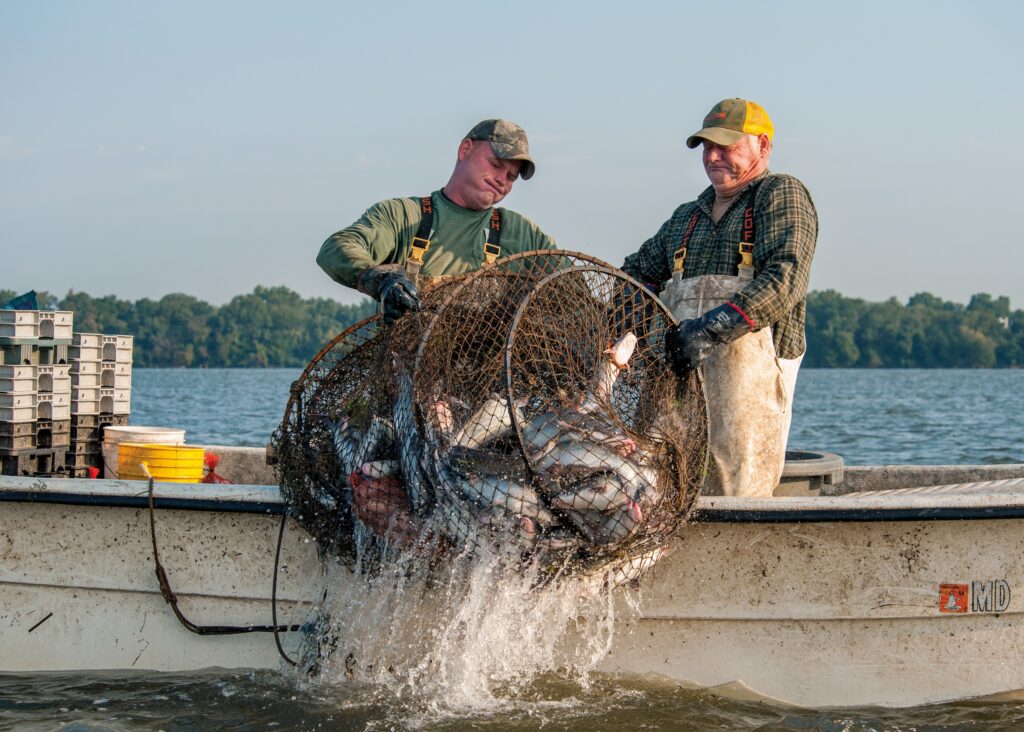
Recognizing the Issue
It wasn’t until 2014 that the negative impacts were ‘officially’ recognized by Maryland and Virginia. The Chesapeake Bay Program released data collected by the Sustainable Fisheries Goal Implementation Team that provided scientific evidence that the blue cats were having a negative effect on native species through predation. Blue catfish grow to impressive sizes—more than 100 pounds. They are opportunistic feeders and eat indiscriminately throughout the water column. Larger catfish prefer to prey upon fish such as Atlantic menhaden, gizzard shad, and white perch, while smaller catfish primarily feed on the bottom, using their barbels to sniff out shellfish, crustaceans, and fish eggs in the mud.
Maryland DNR fisheries biologists speculate that the abundance of blue catfish in the Bay’s tributaries is contributing to the low young-of-the-year counts for striped bass. For the past four years, the annual survey in the Upper Bay and its tributaries (the same habitats where blues thrive) has shown low recruitment of juvenile fish. An unreleased video shot by a Maryland DNR Fisheries biologist showed a blue catfish regurgitating thousands of eggs during the striped bass spawn on the Choptank River. It is difficult (if not impossible) to quantify the impact that blue catfish are having on the spawning success of native fish, but it’s safe to say it’s not good.
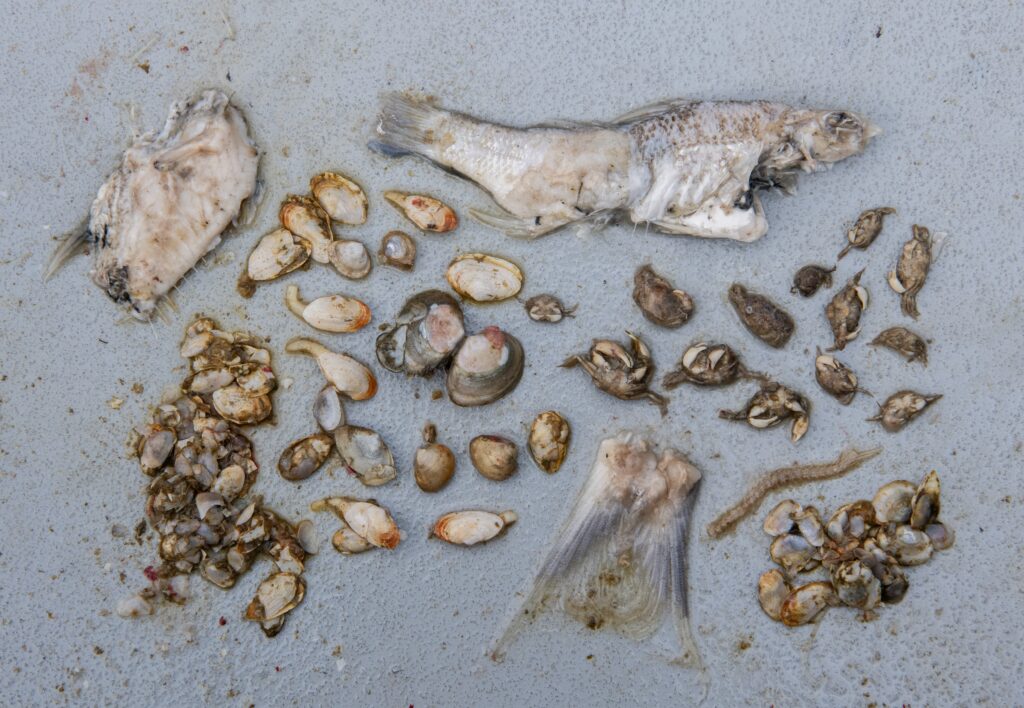
A Virginia study on feeding ecology in tidal rivers showed seasonal shifts in the diet of the blue catfish. During the colder months, the catfish keyed in on fish and shellfish while in the warmer months, catfish primarily ate vegetation and crustaceans. This data reaffirmed the point that blue catfish are a generalist species—they eat a wide variety of food and can live in a wide range of habitats.
Researchers from Salisbury University studying the blue catfish diet in the Nanticoke River identified remains of a wood duck in the belly of a 47-pound fish caught in the fall of 2022. Watermen targeting catfish in the same area caught fish that regurgitated remains of turtles and muskrats. Many ecologically and commercially important species in the Bay are at risk of catfish predation, and only time will tell which species will be affected most by the increase in catfish numbers.
With the landings of Maryland’s most economically valuable finfish and crustaceans declining over the last decade, Governor Wes Moore asked the federal government to step in. Moore requested that NOAA declare the catfish conundrum an emergency under the Magnuson-Stevenson Fisheries Conservation and Management Act to make the state eligible for federal funding to expand the fishery and processing industry. This request was initially denied by the commerce secretary in January 2024. Two months later, stakeholders regained hope that help was on the way. In March, Senators Chris Van Hollen and Ben Cardin traveled to Tilghman Island Seafood Co., the only USDA-certified processing plan on the Eastern Shore, to announce $4.5 million dollars in federal funding to expand the catfish industry. Virginia also recently dedicated funding to expanding the catfish processing industry by approving a $250,000 grant for Sea Farms Inc. in Hayes.
Up-and-Coming Fishery
With no harvest limits, minimum sizes, or closed season there is great potential for the commercial fishery and the market for blue catfish to develop. Political roadblocks and a low price-per-pound to the watermen have slowed the development.
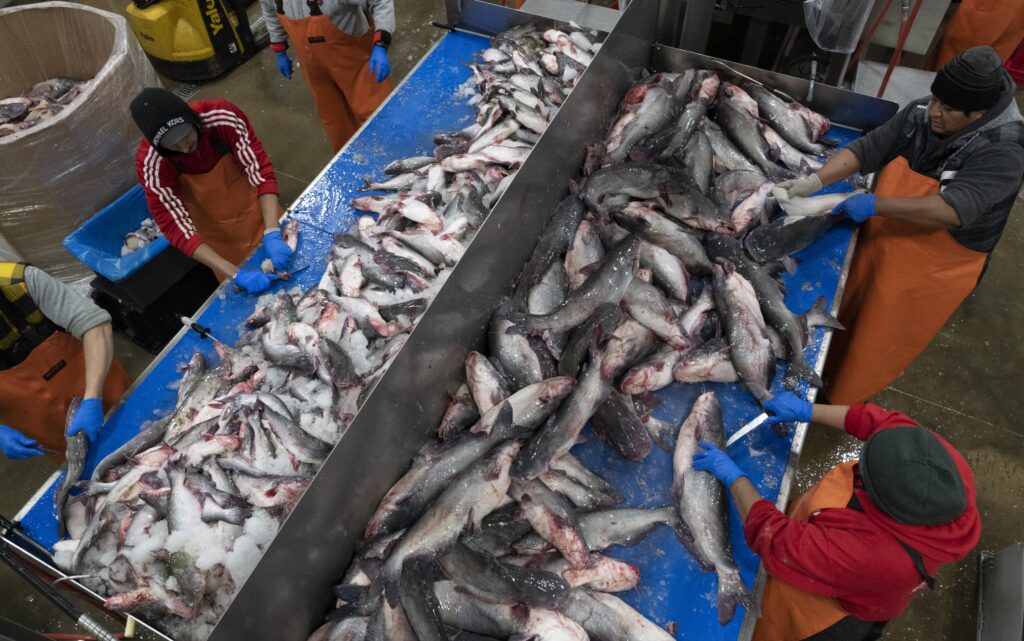
As the commercial fishery was gaining momentum in 2017, a law was passed on the federal level that required processors cutting blue catfish to have a USDA inspector on-site. This law was designed to protect domestic farm-raised catfish from foreign imports and the rising supply of wild Chesapeake catfish. The regulation temporally suppressed the demand, lowered the price for watermen, and created more obstacles for processors that were already selling wild blue catfish filets. A handful of larger processors in both Maryland and Virginia pushed forward by applying for grants that covered the additional cost of the USDA inspector. For the processors complying with the new law, having the catfish filets labeled as ‘USDA inspected’ helped open up larger markets such as school cafeterias, prison systems, and branches of the military.
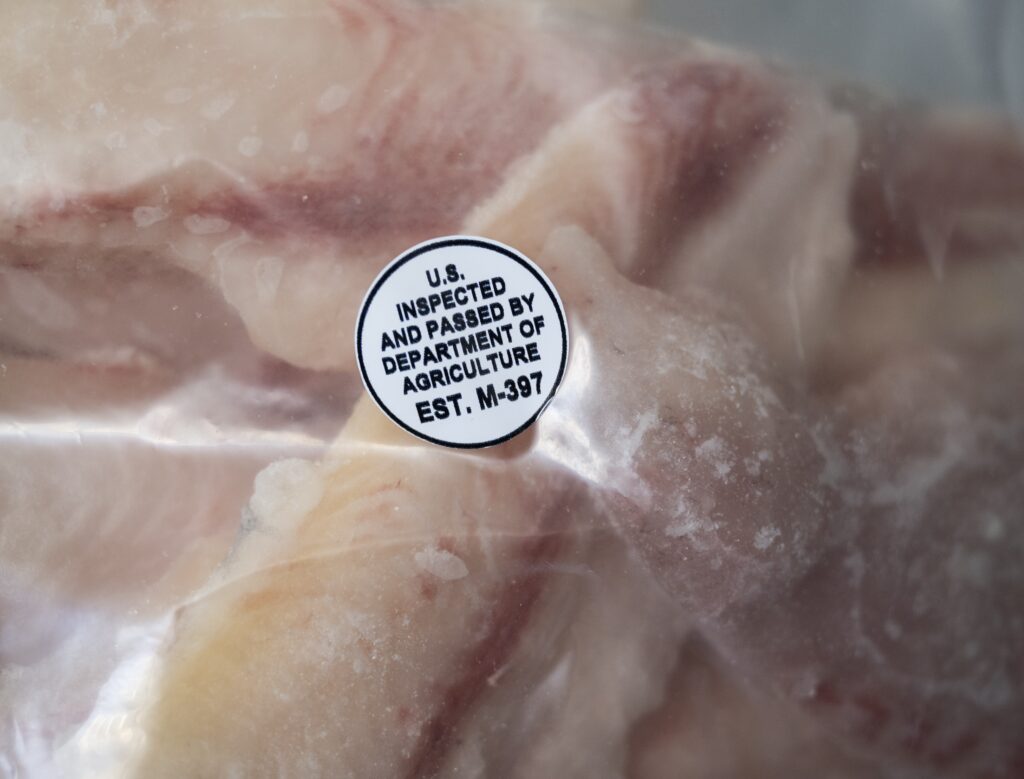
Washington DC-based wholesaler ProFish has been onboard with blue catfish since the beginning. Owner Tim Lydon says, “It is the least expensive fresh fish that we sell. In 2010 we bought 1,000 pounds, 500,000 pounds in 2015, and close to 800,000 pounds in 2023.” The market is expanding but Lydon feels that the name of the fish is holding back sales: catfish have a bad reputation for being a “muddy bottom feeder.” Wild caught blue catfish are an exception to this stereotype. Their firm white meat has a mild flavor and is versatile in the kitchen. The Maryland Department of Agriculture is making efforts to sway public opinion on the culinary quality of blue catfish by doing cooking demonstrations and public awareness campaigns on the “malicious but delicious” fish.
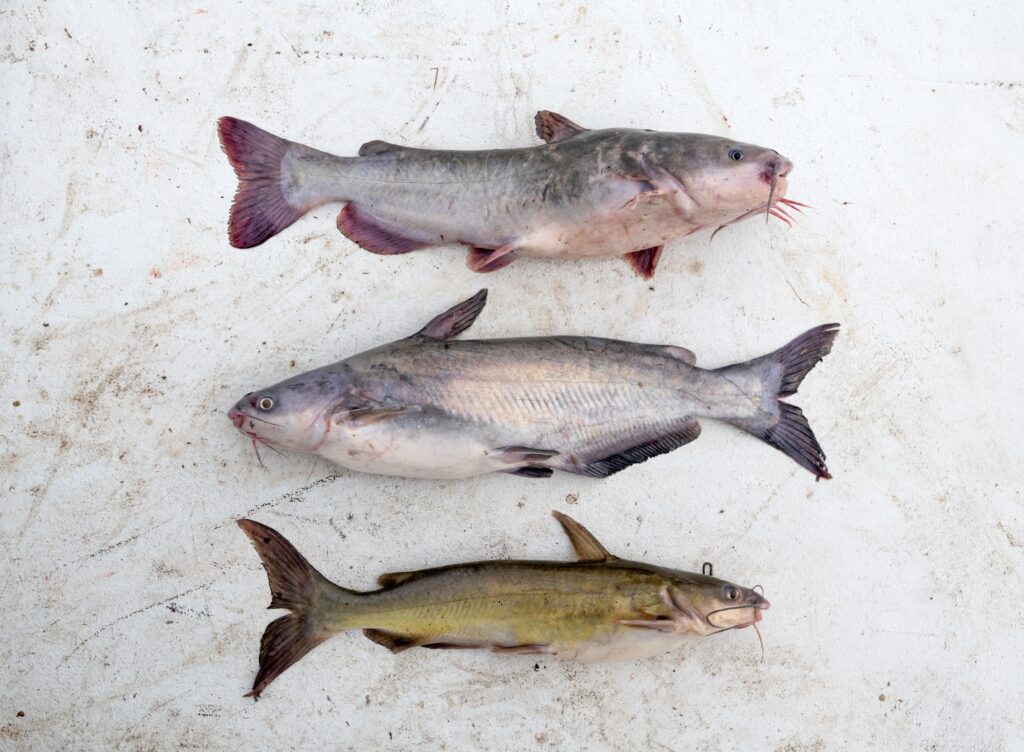
The dockside price for blue catfish is considerably lower than most finfish harvested out of the Bay. More valuable fish, such as striped bass and flounder, can fetch up to $5 per pound for watermen, while the price of blue catfish fluctuates between $.50 and $1 for whole fish. The lower price has been a deterrent for watermen to invest in the fishery, but for those able to harvest high volumes of catfish, the landings can be profitable.
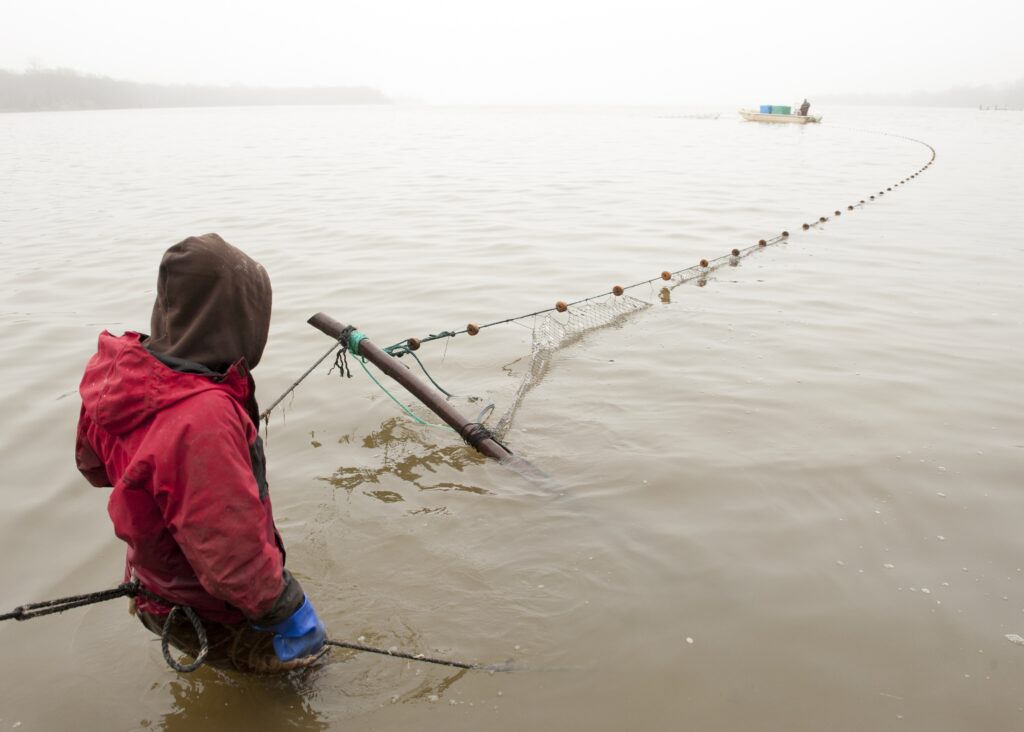
Catfish are harvested throughout the Upper Bay and its tributaries with haul seine nets, fyke nets, pound nets, fish pots and trotlines. In 2023 a total of 4 million pounds of blue catfish was harvested in Maryland—75 percent of those landings were from haul seiners working in Charles County. During the winter and early spring when the catfish are schooled up, it is not uncommon to see one set of a haul seine catch 20,000 pounds of fish.
In a recent effort to encourage more people to target blue catfish, the Maryland DNR started a pilot program to create a finfish trotline license that is available to individuals who don’t hold a commercial license. Prior to the pilot program, anyone wanting to target blue cats with more than a rod and reel would have needed a commercial license. By dropping the barriers to entry and creating this opportunity with a nominal $15 fee, the department is hoping to encourage more people to get into the fishery.
Without increased pressure to suppress blue catfish populations in the Bay, many fear the damage to the Bay’s aquatic ecology and food web could be irreversible. Developing markets and encouraging the commercial fishery for blue catfish has the potential to take sustainability to the next level. This is a unique bipartisan opportunity for politicians and fisheries managers in both Maryland and Virginia to create a situation where economics and conservation action could work together.
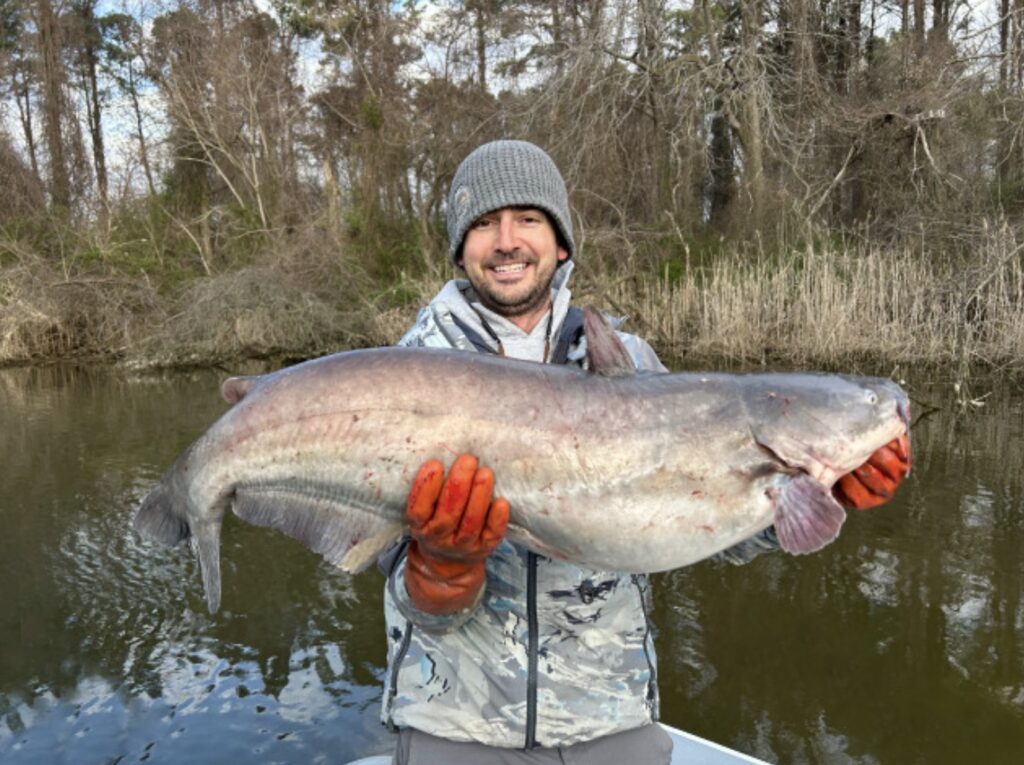
Jay Fleming is an Annapolis-based professional photographer and author who fully immerses himself into his work. While working on this story, Jay put his new finfish trotline license to use to see how many blue catfish were swimming in his home waters on the Severn River. This oversized blue catfish fish along with many others were caught less than a mile from his home in Whitehall Bay.

